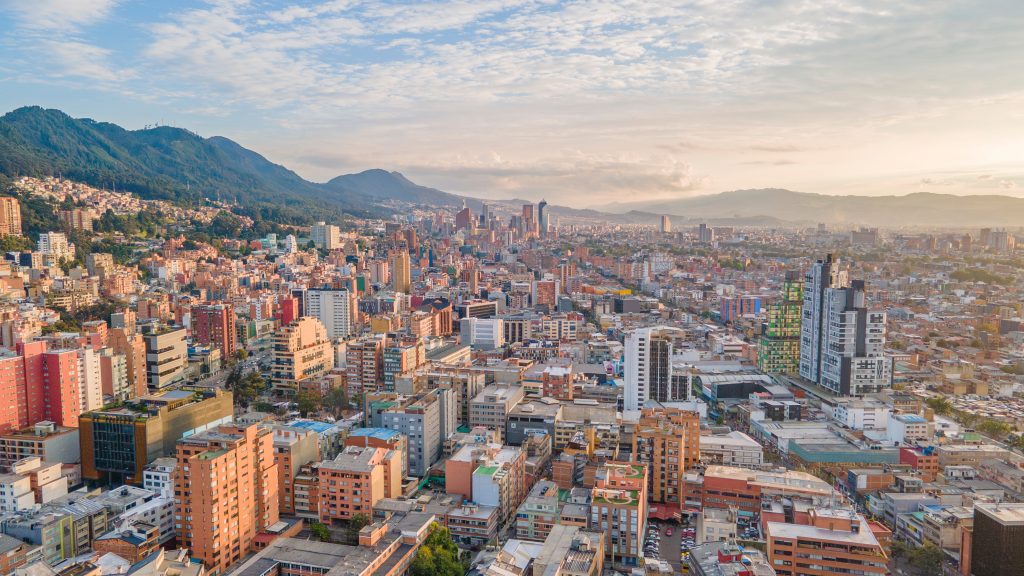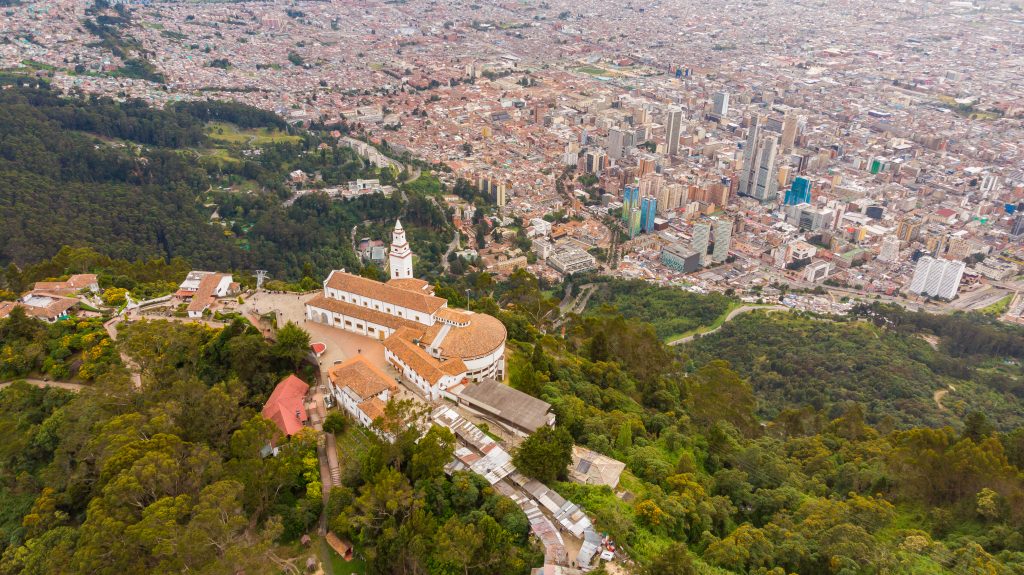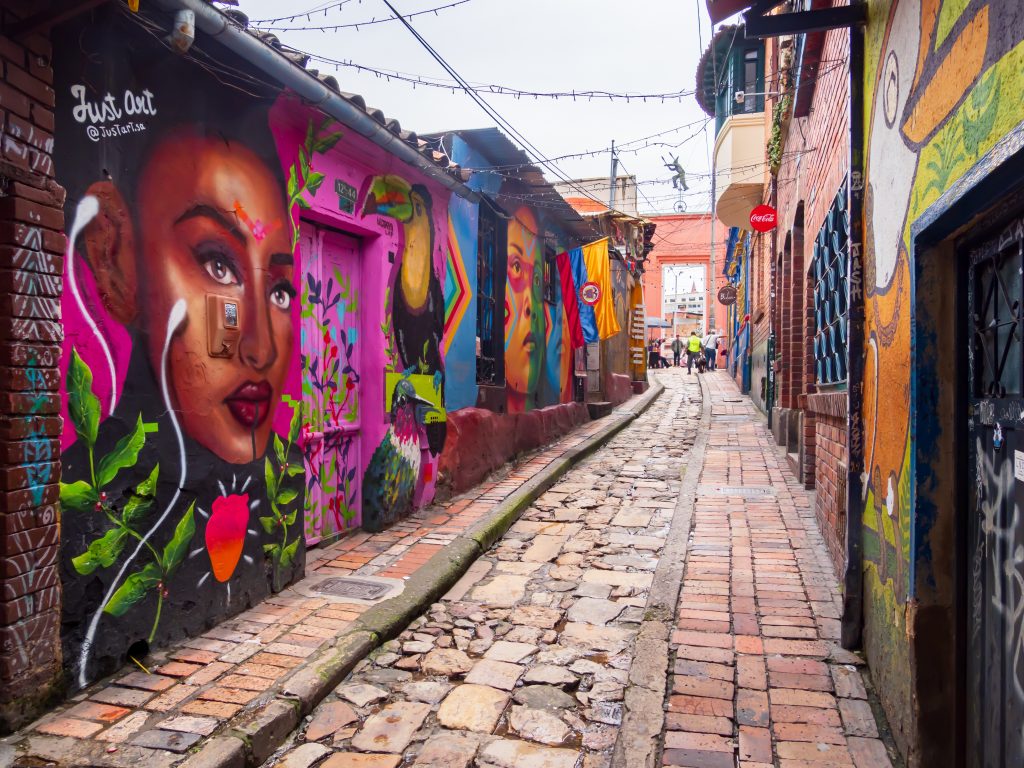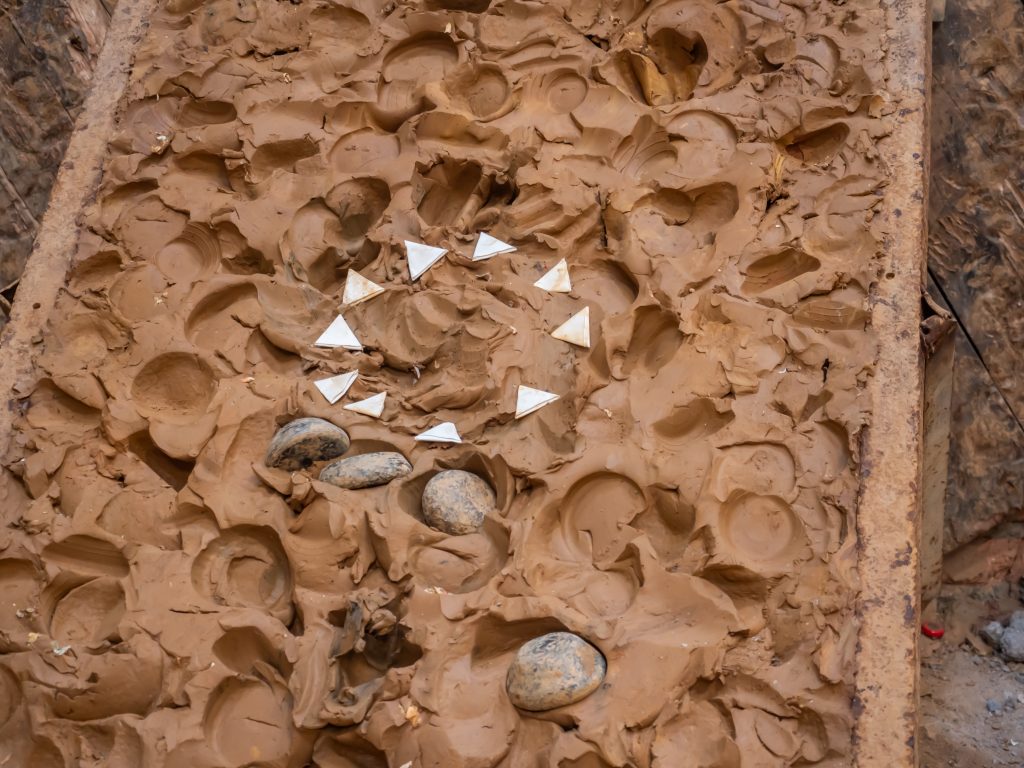William Galante spends some time in Bogotá exploring the city’s rich heritage and vibrant local culture, sampling traditional foods, and experiencing the centuries-old game of tejo away from the usual tourist crowds.
By William Galante
At 2,640 metres above sea level, Bogotá is not only the third-highest capital city in the world but also the most populous at such altitude. Despite its urban sprawl and dense population, Colombia’s capital ranks among the greenest cities in the Americas. Rising roughly 500 metres above it all is Monserrate, a sacred mountain that has long watched over Bogotá. Even in the low season—Colombia’s damp, misty winter—pilgrims make the climb. The chill and drizzle are no match for faith.
Monserrate’s significance predates colonisation. The indigenous Muisca people revered the mountain as a spiritual axis, a place where they believed the distance between earth and their gods was thinnest. Today, that same reverence manifests in Catholic devotion. Worshippers ascend via funicular, cable car, or the more arduous stone path leading to the Basílica Santuario del Señor Caído de Monserrate (Sanctuary of the Fallen Lord).
As I climb the final steps, sculptures depicting the Stations of the Cross guide my way, while the Padre Nuestro (Lord’s Prayer) echoes from hidden speakers. The path winds through thick greenery teeming with birdlife—Colombia is known as the land of hummingbirds, and with good reason. Of the 300 species found globally, 180 are native to this country, many of them thriving in the Andean cloud forests that surround the capital.
This fusion of ancient spiritual tradition, Spanish colonial legacy, and breathtaking biodiversity encapsulates what makes Bogotá so compelling. Even the city’s name reflects this blend: “Bogotá” is a colonial adaptation of Bacatá, the Muisca word meaning “beyond the cultivated fields”—a reference to the fertile savannahs upon which the city now sits.
I learn this from Luis, a Bogotano tour guide with deep roots in the historic district of La Candelaria. During the high season, his walking tours often sell out weeks in advance. But on this cool November morning, I’m one of just three travellers exploring Bogotá with him—a small luxury afforded by the low season.
We set off from one of the city’s many universities towards the base of Monserrate. Despite students bustling about at the end of the academic term, tourism is quieter, lending our walk a relaxed rhythm. We pass street vendors selling fresh arepas, tamales, and locally sourced coffee. Almost every wall is covered in murals or graffiti—an ever-evolving tapestry of indigenous iconography, political commentary, and vibrant commercial art.
Luis explains that, following the killing of a street artist by police in 2011, Colombia legalised graffiti. In the decade since, Bogotá has become a global street art capital. Today, local businesses frequently commission artists to paint their façades—part marketing, part public gallery.
Over breakfast, Luis introduces us to another Muisca legacy: the medicinal use of the coca plant. While the rest of the world mostly knows coca as the raw material for cocaine, in the Andes it is a cultural staple, used to relieve fatigue, pain, and digestive discomfort. After a hearty meal, it’s common to drink coca leaf tea or chew the dried leaves.
Luis leads us through Bogotá’s colonial heart to the Plaza Distrital de Mercado La Concordia, a market steeped in tradition. November is prime harvesting time, and Colombia’s vast array of native fruits is on full display—over 450 varieties exist, and many are in season now.
We stop at Oh Gloria’s, a family-run stall where Gloria herself assembles bespoke fruit platters or smoothies to suit your mood or remedy your ailment. I leave with a cup brimming with vibrant fruit I’ve never tasted before—and likely couldn’t name again. Before departing the market, we sample chicha, a fermented maize drink that has been consumed in the Andes since pre-Columbian times.
Before the trip, I’d read about Colombia’s national sport, tejo—a game that involves disc-throwing, beer, and small-scale explosions. I ask Luis about it. He grins and says, “It mixes beer and gunpowder. The more you drink, the better you play.”
Tejo’s origins lie with the Muisca people, who would throw gold discs (tejos) at targets as a ritual offering to the gods. After the arrival of the Spanish, gunpowder was added in the form of mechas—tiny paper triangles filled with explosive powder. Today, modern tejos are made from metal rather than gold, and while beer isn’t technically required, it’s now central to the experience.
That afternoon, I visit Tejo Ancestral, a modern venue in La Candelaria with multiple courts, including beginner-friendly lanes just 10 metres long. The lighter discs weigh around a kilogram—easy enough for novices. Professional players hurl three-kilo discs from 30 metres away with pinpoint accuracy. I may not have exploded many mechas, but the few that did detonate sent adrenaline coursing through my system. I understood the appeal instantly.
The next day, I head north to Chapinero, one of Bogotá’s trendier districts, to find a more traditional tejo hall. It’s a Sunday, and much of the city’s main roads are closed to cars—part of Ciclovía, Bogotá’s weekly tradition that transforms urban streets into public spaces for cyclists, joggers and pedestrians. My walk to the venue is accompanied by live music, birdsong, and the rhythmic hum of bicycle tyres on wet asphalt.
At the tejo hall, I meet Jairo and his extended family—15 strong. While some families go to Sunday Mass, Jairo’s clan heads to the tejo courts. His wife drops them off in an old Toyota RAV4, and the game begins. As Jairo tells me with a wink, “You play better when you’ve had a few.” It seems the only driver needed today was the designated one.
Both Jairo and Luis speak of the importance of changing the narrative surrounding Colombia. For decades, international perceptions were shaped by violence and instability. But today’s Colombia tells a different story—one of resilience, culture, and breathtaking beauty.
As I depart Chapinero, light rain begins to fall. Cyclists ride undeterred, passing under trees and lampposts strung with festive lights. Monserrate still looms in the distance, higher even than Torre Bacatá, Bogotá’s tallest skyscraper and a tribute to its indigenous roots.
In a few months, the rain will subside and tourists will flood back. But for now, I’m glad to have experienced Bogotá in its quietest, most authentic state—wrapped in mist, humming with history, and echoing with laughter and the sound of distant mechas.




